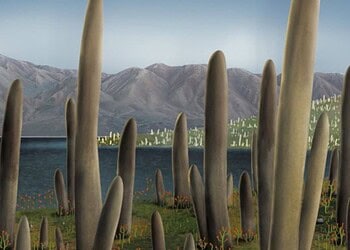A tree stump in New Zealand manages to keep itself alive by grafting its roots to those of other trees, exchanging water and nutrients through this system. Researchers say this should convince us to think of forest trees less as individuals, and more as “superorganisms”.

Tree society
It all started when two scientists were hiking in the outskirts of Auckland, New Zealand. They came across something extremely unusual: a tree stump. It wasn’t surprising to find the stump itself, which belonged to a kauri tree, a common species in the area. Rather, it was surprising that it was still alive without any leaves.
“My colleague Martin Bader and I stumbled upon this kauri tree stump while we were hiking in West Auckland,” says corresponding author Sebastian Leuzinger, an associate professor at the Auckland University of Technology (AUT). “It was odd, because even though the stump didn’t have any foliage, it was alive.”
Photosynthesis is a vital process which helps trees to live and grow, but without any foliage, they can’t undergo photosynthesis, and therefore can’t (theoretically) survive. Leuzinger and Bader measured the water flow in both the stump and the surrounding trees (all of which belong to the same species). They found that when water was flowing in the tree stump, it was flowing out of the other trees.
This indicates that the trees are grafted together, and the surrounding trees support it.
“This is different from how normal trees operate, where the water flow is driven by the water potential of the atmosphere,” Leuzinger says. “In this case, the stump has to follow what the rest of the trees do, because since it lacks transpiring leaves, it escapes the atmospheric pull.”
From the stump’s perspective, it makes a lot of sense: it’s probably the only way it can survive. But why would the other trees do it?
“For the stump, the advantages are obvious–it would be dead without the grafts, because it doesn’t have any green tissue of its own,” Leuzinger says. “But why would the green trees keep their grandpa tree alive on the forest floor while it doesn’t seem to provide anything for its host trees?”
Superorganisms
There’s no clear answer to this, but Leuzinger has a theory. He suspects that the grafts were formed before the tree became a stump. This would have a couple of advantages for all the trees. For starters, it would provide improved anchorage for all the connected trees — which is important for the steep slope where the kauri trees are located. Secondly, it would enable the trees to share nutrients with one another, creating a more balanced resource distribution.
As one of the trees stopped playing its part in supporting nutrients, this may have just gone unnoticed, or the trees may have continued to support it (it’s unclear exactly how they could stop this from happening).
If this is indeed the case, it opens up an intriguing discussion: are trees more than just isolated individuals? In other words, can we talk about a tree “society”?
“This has far-reaching consequences for our perception of trees – possibly we are not really dealing with trees as individuals, but with the forest as a superorganism,” Leuzinger says.
The question is not straightforward, because the association also comes with downsides. For instance, while this interconnectivity could help some trees cope with drought or insufficient nutrients, it also allows the rapid spread of diseases. The truth is we still don’t know enough about this to draw a definitive conclusion.
“This is a call for more research in this area, particularly in a changing climate and a risk of more frequent and more severe droughts,” Leuzinger says. “This changes the way we look at the survival of trees and the ecology of forests.”
The study was published in iScience https://www.cell.com/iscience/fulltext/S2589-0042(19)30146-4
.






